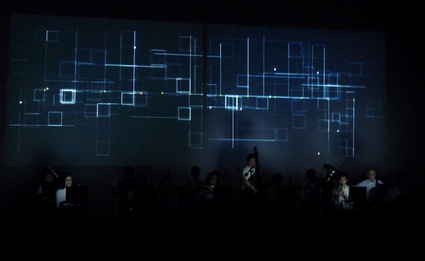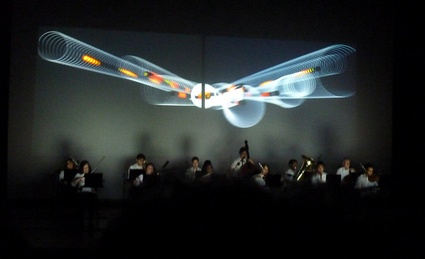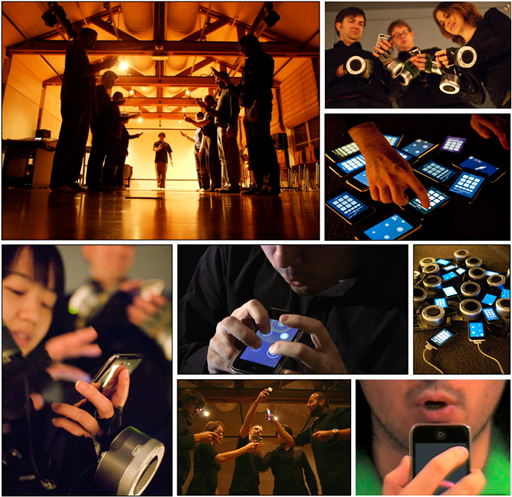May 24, 2016
Incentivized competitions boost innovation
The last decade has witnessed a tremendous advance in technological innovations. This is also thanks to the growing diffusion of open innovation platforms, which have leveraged on the explosion of social network and digital media to promote a new culture of “bottom-up” discovery and invention.
An example of the potential of open innovation to revolutionize technology and science is provided by online crowdfunding sites for creative projects, such Kickstarter and Indiegogo. In the last few years, these online platforms have supported thousands of projects, including extremely innovative products such as the headset Oculus, which has contributed to the renaissance of Virtual Reality.

Incentivized competitions represent a further strategy for engaging the public and gathering innovative ideas on a global scale. This approach consists in identifying the most interesting challenges and inviting the community to solve them.
One of the first and most popular incentivized competitions is the Ansari X-Prize, celebrating this year its 10th anniversary. Funded by the Ansari family, the Ansari X-Prize challenged teams from around the world to build a reliable, reusable, privately financed, manned spaceship capable of carrying three people to 100 kilometers above the Earth's surface twice within two weeks. The prize was awarded in 2004 to Mojave Aereospace Ventures and since then, the award has contributed to create a new private space industry. Recently, X-Prize has introduced spin-off for-profit venture HeroX, a kind of “Kickstarter” of X-Prize-type competitions. The platform allows anyone to post their own competition.
Those who think they have the best solution can then submit their entries to win a cash prize. Another successful incentivized contest is Qualcomm Tricorder X Prize, offering a US$7 million grand prize, US$2 million second prize, and US$1 million third prize to the best among the finalists offering an automatic non-invasive health diagnostics packaged into a single portable device that weighs no more than 5 pounds (2.3 kg), able to diagnose over a dozen medical conditions, including whooping cough, hypertension, mononucleosis, shingles, melanoma, HIV, and osteoporosis.
Incentivized competitions have proven effective in supporting the solution to global issues and develop powerful new visions of the future that can potentially impact the lives of billions of people. The reason of such effectiveness is related to the “format” of these competitions.
Open idea contests include clear and well-defined objectives, which can be measured objectively in terms of performance/outcome, and a significant amount of financial resources to achieve those objectives. Further, incentive competitions target only “stretch goals”, very ambitious (and risky) objectives that require very innovative strategies and original methodologies in order to be addressed.
Incentive competitions are also very “democratic”, in the sense that they are not limited to academic teams or research organizations, but are open to the involvement of large and small companies, start-ups, governments and even single individuals.
11:16 Posted in Blue sky, Creativity and computers | Permalink | Comments (0)
Aug 31, 2014
Information Entropy
Information – Entropy by Oliver Reichenstein
Will information technology affect our minds the same way the environment was affected by our analogue technology? Designers hold a key position in dealing with ever increasing data pollution. We are mostly focussed on speeding things up, on making sharing easier, faster, more accessible. But speed, usability, accessibility are not the main issue anymore. The main issues are not technological, they are structural, processual. What we lack is clarity, correctness, depth, time. Are there counter-techniques we can employ to turn data into information, information into knowledge, knowledge into wisdom?
Oliver Reichenstein — Information Entropy (SmashingConf NYC 2014) from Smashing Magazine on Vimeo.
Aug 05, 2014
Life's a beach at work for Japanese company
A Japanese company has recreated a tropical beach in the very reception area they also use as their employee meeting space and staff lounge.
18:18 Posted in Creativity and computers, Virtual worlds | Permalink | Comments (0)
Aug 03, 2014
Fly like a Birdly
Birdly is a full body, fully immersive, Virtual Reality flight simulator developed at the Zurich University of the Arts (ZHdK). With Birdly, you can embody an avian creature, the Red Kite, visualized through Oculus Rift, as it soars over the 3D virtual city of San Francisco, heightened by sonic, olfactory, and wind feedback.
21:38 Posted in Blue sky, Creativity and computers, Telepresence & virtual presence, Virtual worlds | Permalink | Comments (0)
Mar 09, 2014
Shugo Tokumaru "Katachi"
14:29 Posted in Creativity and computers, Cyberart | Permalink | Comments (0)
Mar 03, 2014
By licking these electric ice cream cones, you can make music
From Wired
Ice cream can be the reward after a successful little league game, a consolation after a bad breakup, or, in the hands of gourmet geeks, a sweet musical instrument. Designers Carla Diana and Emilie Baltz recently whipped up a musical performance where a quartet of players jammed using just a quart of vanilla ice cream and some high-tech cones

00:07 Posted in Creativity and computers, Cyberart, Future interfaces | Permalink | Comments (0)
Dec 24, 2013
The Creative Link: Investigating the Relationship Between Social Network Indices, Creative Performance and Flow in Blended Teams
The Creative Link: Investigating the Relationship Between Social Network Indices, Creative Performance and Flow in Blended Teams
Andrea Gaggioli, Elvis Mazzoni, Luca Milani, Giuseppe Riva
This study presents findings of an exploratory study, which has investigated the relationship between indices of social network structure, flow and creative performance in students collaborating in blended setting. Thirty undergraduate students enrolled in a Media Psychology course were included in five groups, which were tasked with designing a new technology-based psychological application. Team members collaborated over a twelve-week period using two main modalities: face-to-face meeting sessions in the classroom (once a week) and virtually using a groupware tool. Social network indicators of group interaction and presence indices were extracted from communication logs, whereas flow and product creativity were assessed through survey measures. Findings showed that specific social network indices (in particular those measuring decentralization and neighbor interaction) were positively related with flow experience. More broadly, results indicated that selected social network indicators can offer useful insight into the creative collaboration process. Theoretical and methodological implications of these results are drawn.
20:36 Posted in Creativity and computers, Research tools | Permalink | Comments (0)
Nov 20, 2013
inFORM
inFORM is a Dynamic Shape Display developed by MIT Tangible Media Group that can render 3D content physically, so users can interact with digital information in a tangible way.
inFORM can also interact with the physical world around it, for example moving objects on the table’s surface.
Remote participants in a video conference can be displayed physically, allowing for a strong sense of presence and the ability to interact physically at a distance.
Aug 07, 2013
Hive-mind solves tasks using Google Glass ant game
Re-blogged from New Scientist
Glass could soon be used for more than just snapping pics of your lunchtime sandwich. A new game will connect Glass wearers to a virtual ant colony vying for prizes by solving real-world problems that vex traditional crowdsourcing efforts.
Crowdsourcing is most famous for collaborative projects like Wikipedia and "games with a purpose" like FoldIt, which turns the calculations involved in protein folding into an online game. All require users to log in to a specific website on their PC.
Now Daniel Estrada of the University of Illinois in Urbana-Champaign and Jonathan Lawhead of Columbia University in New York are seeking to bring crowdsourcing to Google's wearable computer, Glass.
The pair have designed a game called Swarm! that puts a Glass wearer in the role of an ant in a colony. Similar to the pheromone trails laid down by ants, players leave virtual trails on a map as they move about. These behave like real ant trails, fading away with time unless reinforced by other people travelling the same route. Such augmented reality games already exist – Google's Ingress, for one – but in Swarm! the tasks have real-world applications.
Swarm! players seek out virtual resources to benefit their colony, such as food, and must avoid crossing the trails of other colony members. They can also monopolise a resource pool by taking photos of its real-world location.
To gain further resources for their colony, players can carry out real-world tasks. For example, if the developers wanted to create a map of the locations of every power outlet in an airport, they could reward players with virtual food for every photo of a socket they took. The photos and location data recorded by Glass could then be used to generate a map that anyone could use. Such problems can only be solved by people out in the physical world, yet the economic incentives aren't strong enough for, say, the airport owner to provide such a map.
Estrada and Lawhead hope that by turning tasks such as these into games, Swarm! will capture the group intelligence ant colonies exhibit when they find the most efficient paths between food sources and the home nest.
Read full story
13:12 Posted in Augmented/mixed reality, Creativity and computers, ICT and complexity, Wearable & mobile | Permalink | Comments (0)
May 26, 2013
Cross-Brain Neurofeedback: Scientific Concept and Experimental Platform
Cross-Brain Neurofeedback: Scientific Concept and Experimental Platform.
PLoS One. 2013;8(5):e64590
Authors: Duan L, Liu WJ, Dai RN, Li R, Lu CM, Huang YX, Zhu CZ
Abstract. The present study described a new type of multi-person neurofeedback with the neural synchronization between two participants as the direct regulating target, termed as "cross-brain neurofeedback." As a first step to implement this concept, an experimental platform was built on the basis of functional near-infrared spectroscopy, and was validated with a two-person neurofeedback experiment. This novel concept as well as the experimental platform established a framework for investigation of the relationship between multiple participants' cross-brain neural synchronization and their social behaviors, which could provide new insight into the neural substrate of human social interactions.
19:36 Posted in Biofeedback & neurofeedback, Cognitive Informatics, Creativity and computers | Permalink | Comments (0)
Nov 02, 2012
Networked Flow: Towards an understanding of creative networks

Gaggioli A., Riva G., Milani L., Mazzoni E.
19:46 Posted in Creativity and computers, Social Media, Telepresence & virtual presence | Permalink | Comments (0)
Dec 27, 2010
Post-apocalyptic Tokyo scenery
fantastic photo manipulations by Tokyogenso. See more here

17:30 Posted in Blue sky, Creativity and computers, Cyberart | Permalink | Comments (0)
Zilok: peer to peer renting
From Mauro Cherubini's Moleskine
Zilok is a startup that offers an interesting service: peer to peer renting.
How it works? Users post possessions they are willing to rent out, along with a price. The web site processes the fee, track the reputation of your renting partner and issues insurance for the item.

17:23 Posted in Creativity and computers, Social Media | Permalink | Comments (0)
Aug 26, 2010
Heart Chamber Orchestra
The Heart Chamber Orchestra consists of classical musicians who use their heartbeats to control a computer composition and visualization environment. To my best knowledge, this is the first example of "group biofeedback".
The musicians are equipped with ECG (electrocardiogram) sensors. A computer monitors and analyzes the state of these 12 hearts in real time. The acquired information is used to compose a musical score with the aid of computer software. It is a living score dependent on the state of the hearts.


While the musicians are playing, their heartbeats influence and change the composition and vice versa. The musicians and the electronic composition are linked via the hearts in a circular motion, a feedback structure. The emerging music evolves entirely during the performance.
The resulting music is the expression of this process and of an organism forming itself from the circular interplay of the individual musicians and the machine.
The sensor network consists of 12 individual sensors; each one is fitted onto the body of a musician. A computer receives the heartbeat data. Software analyzes the data and generates via different algorithms the real-time musical score for the musicians, the electronic sounds and the computer graphic visualization
Below is a video documentation from the Heart Chamber Orchestra performance on the 28th of March 2010 at Kiasma Theatre at Pixelache Festival in Helsinki, Finland.
20:02 Posted in Biofeedback & neurofeedback, Creativity and computers, Cyberart | Permalink | Comments (0) | Tags: biofeedback, heart chamber orchestra, creativity
Dec 20, 2009
Head Chaise: Couching One's Thoughts into a Brain Wave Sofa
From Scientific American
Two European designers, Dries Verbruggen and Lucas Maassen used their alpha waves as a source of inspiration for their design work, which resulted in a piece of furniture, the Brain Wave Couch.
“The process is a wink to a rather futuristic design process,” the couch creators wrote in a press release, “for which a designer merely has to close his or her eyes, or merely rest, to have the brain do all the work, and create the data needed to have the CNC machine cut the shape of the sofa.”
The x-axis of the couch represents Maassen’s brain waves in hertz, while the y-axis shows the amount of alpha activity as a percentage, and the z-axis is the time in milliseconds. Once the foam core of the sofa was completed, the designers covered it by hand in soft gray felt and decorated the valleys of the brain waves with buttons.
The Brainwave Sofa was presented at the Bits ‘n Pieces Exhibition in New York.

20:44 Posted in Biofeedback & neurofeedback, Creativity and computers | Permalink | Comments (0) | Tags: brain-computer interface, neurofeedback, creativity
Dec 06, 2009
Avatar: Can't wait any longer
I just can not wait for the new James Cameron's movie Avatar...
The iPhone Orchestra
The Stanford Mobile Phone Orchestra (MoPhO) is a new repertoire-based ensemble using mobile phones as musical instrument. MoPhO's interactive musical works take advantage of the unique technological capabilities of today's hardware and software, transforming multi-touch screens, built-in accelerometers, built-in microphones, GPS, data networks, and computation into powerful and yet mobile chamber meta-instruments.
The researcher behind the idea, Ge Wang, believes cell phones are becoming so powerful that we “cannot ignore them anymore as platforms for creativity. . . . It levels the playing ground in some ways, because everyone has a cell phone.”

The Stanford Mobile Phone Orchestra’s performance on December 3 at Palo Alto (CA) used an Apple iPhones amplified by speakers attached to small fingerless gloves. Here is a video of the concert.
13:34 Posted in Creativity and computers, Cyberart, Positive Technology events, Wearable & mobile | Permalink | Comments (0) | Tags: iphone, cybermusic, cybersound, orchestra, stanford, mobile phone, digital creativity
Oct 10, 2009
Nokia N900 hacks
Enjoy
15:22 Posted in Creativity and computers | Permalink | Comments (0) | Tags: creativity, nokia n900, hacking
Jun 26, 2009
Reactable
From the Reactable website:
The Reactable is a revolutionary new electronic musical instrument designed to create and perform the music of today and tomorrow. It combines state of the art technologies with a simple and intuitive design, which enables musicians to experiment with sound, change its structure, control its parameters and be creative in a direct and refreshing way, unlike anything you have ever known before.
The Reactable uses a so called tangible interface, where the musician controls the system by manipulating tangible objects. The instrument is based on a translucent and luminous round table, and by putting these pucks on the Reactable surface, by turning them and connecting them to each other, performers can combine different elements like synthesizers, effects, sample loops or control elements in order to create a unique and flexible composition.
As soon as any puck is placed on the surface, it is illuminated and starts to interact with the other neighboring pucks, according to their positions and proximity. These interactions are visible on the table surface which acts as a screen, giving instant feedback about what is currently going on in the Reactable turning music into something visible and tangible.
Additionally, performers can also change the behavior of the objects by touching and interacting with the table surface, and because the Reactable technology is “multi-touch”, there is not limit to the number of fingers that can be used simultaneously. As a matter of fact, the Reactable was specially designed so that it could also be used by several performers at the same time, thus opening up a whole new universe of pedagogical, entertaining and creative possibilities with its collaborative and multi-user capabilities
20:09 Posted in Creativity and computers, Future interfaces | Permalink | Comments (0) | Tags: creativity, music, future interfaces
Jun 09, 2009
Google Wave
Google Wave is a new tool for communication and collaboration on the web, coming later this year. A "wave" is equal parts conversation and document, where people can communicate and work together with richly formatted text, photos, videos, maps, and more. In Google Wave you create a wave and add people to it. Everyone on your wave can use richly formatted text, photos, gadgets, and even feeds from other sources on the web. They can insert a reply or edit the wave directly. It's concurrent rich-text editing, where you see on your screen nearly instantly what your fellow collaborators are typing in your wave. That means Google Wave is just as well suited for quick messages as for persistent content — it allows for both collaboration and communication. You can also use "playback" to rewind the wave and see how it evolved.
Watch the demo video below
15:52 Posted in Creativity and computers | Permalink | Comments (0) | Tags: computer supported collaborative work, creativity






